
Going-to-the-Sun Road: This iconic 50-mile scenic drive is one of the park's most famous attractions. Winding through the heart of the park, the road offers breathtaking views of snow-capped peaks, cascading waterfalls, and glacial valleys. Visitors can stop at various viewpoints, such as Logan Pass, to take in the stunning vistas. Grinnell Glacier: One of the park's most impressive glaciers, Grinnell Glacier is a must-see for hikers and nature enthusiasts. The strenuous hike to the glacier's viewpoint offers stunning panoramic views of the surrounding mountains and the vibrant turquoise-colored Grinnell Lake. Avalanche Lake: This serene and picturesque lake is accessible via the Avalanche Lake Trail, a moderate hike that takes visitors through a lush, forested landscape before revealing the stunning glacial lake surrounded by towering cliffs. Hidden Lake Overlook: The hike to the Hidden Lake Overlook is a popular and challenging trail that rewards hikers with breathtaking views of the Hidden Lake and the surrounding peaks of the Livingston Range. St. Mary Lake: One of the largest lakes in the park, St. Mary Lake is renowned for its stunning turquoise waters and the dramatic mountain backdrop of the Rising Wolf Mountain and Divide Mountain. Waterton-Glacier International Peace Park: Glacier National Park shares a border with Canada's Waterton Lakes National Park, and together they form the Waterton-Glacier International Peace Park, a UNESCO World Heritage Site. Visitors can explore the shared landscapes and enjoy the unique cultural exchange between the two countries. Highline Trail: For experienced hikers, the Highline Trail offers a challenging and rewarding experience. The trail follows the Garden Wall, providing stunning views of the surrounding peaks and glaciers, as well as the opportunity to spot wildlife such as bighorn sheep and mountain goats. Apgar Visitor Center: This visitor center serves as a hub for information, exhibits, and ranger-led programs, providing visitors with an introduction to the park's history, geology, and natural wonders. Lake McDonald: The largest lake in Glacier National Park, Lake McDonald is renowned for its crystal-clear waters and the surrounding mountains that are reflected in its surface. Visitors can enjoy scenic boat tours, kayaking, or simply relax on the shore. Glacier National Park is also home to a diverse array of wildlife, including grizzly bears, black bears, moose, elk, and mountain goats. Visitors should exercise caution and follow park guidelines when exploring the park to ensure a safe and enjoyable experience. In addition to the must-see attractions, Glacier National Park offers a variety of other activities and experiences, such as guided hikes, horseback riding, fishing, and camping. Visitors can also explore the park's rich cultural heritage, including the historic Going-to-the-Sun Road and the Blackfeet Nation's cultural traditions. Whether you're seeking breathtaking natural scenery, challenging outdoor adventures, or a deeper connection with the natural world, Glacier National Park is a truly remarkable destination that should be on every traveler's bucket list.
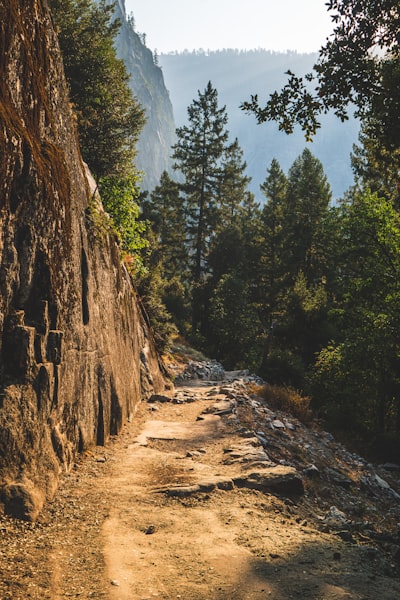
Yosemite Valley: The heart of Yosemite, this iconic valley is home to some of the park's most famous landmarks, including the towering granite cliffs of El Capitan and Half Dome, the thundering Yosemite Falls, and the serene Merced River. Glacier Point: Perched high above Yosemite Valley, Glacier Point provides panoramic views of the park's most famous landmarks, including Half Dome, Yosemite Falls, and the High Sierra. Mariposa Grove of Giant Sequoias: Explore the largest grove of giant sequoia trees in Yosemite, home to some of the oldest and largest trees on Earth, including the famous Grizzly Peak. Tuolumne Meadows: This high-altitude alpine meadow offers stunning vistas of granite peaks, wildflower-filled meadows, and crystal-clear streams, making it a popular destination for hiking and outdoor recreation. Hetch Hetchy Reservoir: Located in the northwest corner of the park, Hetch Hetchy Reservoir is a stunning destination, featuring the Hetch Hetchy Valley and the Tueeulala and Wapama Falls. Olmsted Point: This scenic viewpoint offers breathtaking views of Tenaya Canyon and the iconic granite domes that define Yosemite's landscape. Vernal and Nevada Falls: These two powerful waterfalls, accessible via the Mist Trail, offer a challenging but rewarding hike with stunning views of the park's natural beauty. Yosemite Village: The main hub of the park, Yosemite Village is home to a variety of shops, restaurants, and visitor centers, providing a convenient base for exploring the park. Ansel Adams Gallery: Dedicated to the work of the renowned photographer Ansel Adams, this gallery showcases his iconic images of Yosemite and offers photography workshops and exhibits. Yosemite Museum and Indian Village of Ahwahnee: Explore the rich cultural history of Yosemite, including the indigenous Ahwahneechee people, at this museum and historic site. Tioga Road: This scenic drive through the high country of Yosemite offers stunning views of granite peaks, alpine lakes, and meadows, as well as access to trailheads for hiking and backpacking. Yosemite's backcountry: For the adventurous traveler, Yosemite's vast wilderness areas offer opportunities for hiking, camping, and exploring remote and untouched natural landscapes.
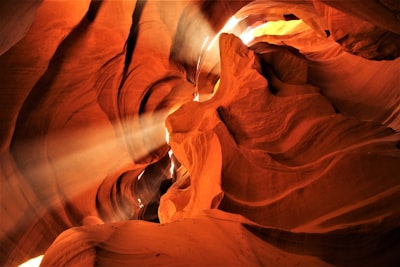
Antelope Canyon Antelope Canyon is the main attraction in this region, consisting of two separate slot canyons: Upper Antelope Canyon and Lower Antelope Canyon. Both offer stunning, otherworldly landscapes carved by the power of wind and water over thousands of years. Visitors can explore the intricate, wave-like patterns of the sandstone walls, which are illuminated by shafts of natural light filtering in from above. The play of light and shadow creates a mesmerizing, ever-changing display of colors and textures. Horseshoe Bend Located just a few miles from Antelope Canyon, Horseshoe Bend is a breathtaking natural wonder. This iconic viewpoint overlooks a dramatic horseshoe-shaped bend in the Colorado River, framed by towering sandstone cliffs. Visitors can hike to the edge of the canyon and take in the stunning panoramic views, which are particularly spectacular during sunrise and sunset. Lake Powell Lake Powell is a vast, man-made reservoir that straddles the border between Utah and Arizona. This stunning body of water is surrounded by towering red rock formations and offers a wealth of recreational activities, including boating, fishing, and swimming. Visitors can explore the lake's numerous coves and inlets, or take a scenic boat tour to see the stunning natural landscapes. Monument Valley Just a short drive from Antelope Canyon, Monument Valley is a iconic landscape of towering sandstone buttes and mesas. This region, which straddles the border between Utah and Arizona, has been the backdrop for countless Western films and is a must-see for any visitor to the American Southwest. Visitors can take a guided tour or explore the valley on their own, taking in the stunning vistas and learning about the rich cultural history of the Navajo people. Vermilion Cliffs National Monument Vermilion Cliffs National Monument is a stunning natural area that features towering, multicolored sandstone cliffs and unique geological formations. Visitors can explore the area's hiking trails, which offer breathtaking views of the surrounding landscape, or take a guided tour to learn more about the area's rich history and ecology. Navajo National Monument The Navajo National Monument is a protected area that preserves the ruins of ancient Puebloan cliff dwellings. Visitors can explore the well-preserved structures and learn about the lives of the people who once lived in this remote and rugged landscape. Grand Canyon National Park While not directly adjacent to Antelope Canyon, the Grand Canyon National Park is a must-see destination for any visitor to the American Southwest. This iconic natural wonder offers breathtaking views of the vast, layered canyon and a wealth of recreational opportunities, from hiking and camping to river rafting and helicopter tours.

1. Old Faithful: This iconic geyser is one of the most famous and predictable natural wonders in the world. Erupting approximately every 90 minutes, it draws large crowds who wait in anticipation to witness its impressive display of steam and water. 2. Grand Prismatic Spring: This stunning hot spring is the largest in the United States and the third-largest in the world. Its vibrant colors, ranging from deep blue to brilliant orange, are the result of thermophilic bacteria that thrive in the hot, mineral-rich waters. 3. Yellowstone Canyon and the Lower Falls: The Yellowstone Canyon is a breathtaking geological feature, with the Lower Falls plunging 308 feet (94 meters) into the canyon below. Visitors can enjoy stunning views from various overlooks, including the popular North Rim Drive and South Rim Drive. 4. Mammoth Hot Springs: These terraced hot springs, formed by the deposition of calcium carbonate, create a unique and otherworldly landscape. Visitors can explore the boardwalks and observe the constantly changing formations. 5. Yellowstone Lake: As the largest high-altitude lake in North America, Yellowstone Lake offers a variety of activities, including fishing, boating, and scenic drives along its shoreline. The lake is also home to a diverse array of wildlife, including the iconic Yellowstone cutthroat trout. 6. Norris Geyser Basin: This dynamic thermal area features a variety of geothermal features, including hot springs, fumaroles, and the Steamboat Geyser, the world's tallest active geyser. 7. Hayden Valley: This expansive meadow is a prime location for wildlife viewing, particularly bison, grizzly bears, and wolves. Visitors can enjoy scenic drives, hikes, and opportunities to observe the park's iconic fauna in their natural habitat. 8. Lamar Valley: Known as the "Serengeti of North America," Lamar Valley is renowned for its abundant wildlife, including bison, elk, pronghorn, and the elusive gray wolf. Visitors can explore the valley by car or on guided wildlife-watching tours. 9. Midway Geyser Basin: Home to the Grand Prismatic Spring, this thermal area also features the Excelsior Geyser Crater, one of the largest active geysers in the world, and the Opal Pool, a stunning hot spring with vibrant colors. 10. Firehole Canyon Drive: This scenic drive offers stunning views of the Firehole River and the surrounding thermal features, including the Firehole Falls and the Firehole Cascades. 11. Yellowstone National Park Visitor Centers: The park's various visitor centers, such as the Albright Visitor Center, the Canyon Visitor Education Center, and the Old Faithful Visitor Education Center, provide valuable information, exhibits, and educational resources about the park's geology, wildlife, and history. 12. Yellowstone National Park Lodges: Staying at one of the park's historic lodges, such as the Old Faithful Inn, the Lake Yellowstone Hotel, or the Roosevelt Lodge, can enhance the overall Yellowstone experience by offering comfortable accommodations and a unique connection to the park's heritage. 13. Yellowstone National Park Hiking Trails: The park offers an extensive network of hiking trails, ranging from easy, family-friendly walks to more challenging backcountry treks. Some of the most popular trails include the Fairy Falls Trail, the Lone Star Geyser Trail, and the Mystic Falls Trail. 14. Yellowstone National Park Wildlife Viewing: In addition to the designated wildlife viewing areas, visitors can often spot a variety of animals, such as bison, elk, bears, wolves, and more, throughout the park while driving or hiking. 15. Yellowstone National Park Scenic Drives: The park's scenic drives, including the Grand Loop Road, the North Rim Drive, and the Beartooth Highway, offer breathtaking vistas and opportunities to explore the diverse landscapes of Yellowstone. Yellowstone National Park is a true natural wonder, offering a vast array of must-see attractions that showcase the park's unique geology, wildlife, and history. Whether you're interested in geothermal features, wildlife viewing, or scenic drives, Yellowstone has something to captivate and inspire every visitor.

The Travertine Terraces: The iconic white travertine terraces and pools of Pamukkale are the main draw of this region. Formed by the natural mineral-rich hot springs, these terraces cascade down the hillside, creating a mesmerizing landscape. Hierapolis Ancient City: Situated above the travertine terraces, the ancient city of Hierapolis is a UNESCO World Heritage Site. Explore the well-preserved ruins, including the Roman theater, the Necropolis, and the Plutonium, a sacred cave believed to be the gateway to the underworld. Cleopatra's Pool: This thermal pool is fed by the natural hot springs and is believed to have been used by the famous Egyptian queen, Cleopatra. Visitors can swim in the warm, mineral-rich waters and admire the ancient Roman columns that lie submerged in the pool. Antique Pool: Also known as the Antique Pool or the Sunken Pool, this partially submerged pool is surrounded by ancient Roman ruins, creating a unique and picturesque setting. Hierapolis Archaeology Museum: This museum houses an impressive collection of artifacts and relics from the ancient city of Hierapolis, including sarcophagi, sculptures, and mosaics. Laodikeia Ancient City: Just a short drive from Pamukkale, the ancient city of Laodikeia is another must-visit site. Explore the well-preserved ruins, including the theater, the agora, and the necropolis.
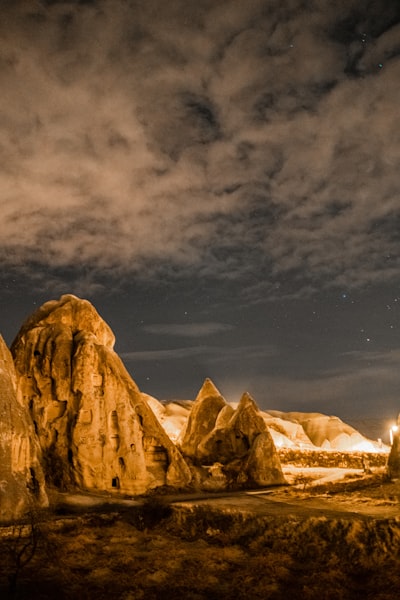
1. Göreme Open-Air Museum: Explore the stunning rock-cut churches, monasteries, and dwellings that date back to the Byzantine era, showcasing intricate frescoes and remarkable architecture. 2. Uçhisar Castle: Climb to the top of this ancient fortress for panoramic views of the surrounding valleys and fairy chimneys, the iconic geological formations that define Cappadocia's landscape. 3. Derinkuyu Underground City: Descend into this vast, multi-level underground city, one of the best-preserved examples of the region's extensive subterranean settlements. 4. Ihlara Valley: Hike through this lush, canyon-like valley, admiring the rock-cut churches, monasteries, and the serene Melendiz River that flows through it. 5. Zelve Open-Air Museum: Discover the remnants of an ancient monastic settlement, including cave dwellings, churches, and other structures carved directly into the rock formations. 6. Paşabağı (Monks Valley): Marvel at the unique "fairy chimneys" and rock formations in this picturesque valley, a popular spot for hot air balloon rides. 7. Göreme National Park: Explore this UNESCO World Heritage Site, known for its stunning lunar-like landscapes, cave dwellings, and rock-cut churches.

The Wildebeest Migration: The Serengeti is famous for the annual wildebeest migration, where millions of wildebeest, zebra, and gazelle traverse the vast grasslands in search of fresh grazing grounds. The best time to witness this spectacle is between June and October, when the herds cross the Mara River, providing a thrilling sight of the animals battling the strong currents and predators. Ngorongoro Crater: Located on the edge of the Serengeti, the Ngorongoro Crater is a UNESCO World Heritage Site and one of the most impressive natural wonders in Africa. This ancient volcanic caldera is home to a diverse array of wildlife, including the rare black rhino, as well as large populations of lions, elephants, and other iconic African animals. Seronera Valley: The Seronera Valley is the heart of the Serengeti and is known for its high concentration of wildlife. This area is particularly famous for its large lion population, and visitors have a high chance of spotting these majestic predators during their game drives. Kopjes: The Serengeti is dotted with iconic rock formations called kopjes, which provide excellent vantage points for spotting wildlife. These rocky outcrops are often used by lions, leopards, and other predators as hunting and resting spots, making them a must-visit for wildlife enthusiasts. Grumeti River: The Grumeti River is a crucial crossing point for the wildebeest migration, and it is also home to a large population of Nile crocodiles. Visitors can witness the dramatic river crossings and the intense battles between the migrating herds and the crocodiles. Olduvai Gorge: Olduvai Gorge is a renowned archaeological site that has provided crucial evidence of early human evolution. Visitors can explore the on-site museum and learn about the significant discoveries made in this important location. Maasai Culture: The Serengeti is home to the Maasai people, a semi-nomadic tribe known for their distinctive culture and traditional way of life. Visitors can arrange cultural tours to learn about the Maasai's customs, traditions, and connection to the land. Whether you're interested in witnessing the awe-inspiring wildebeest migration, exploring the diverse wildlife, or immersing yourself in the rich cultural heritage of the region, Serengeti National Park offers an unforgettable travel experience.
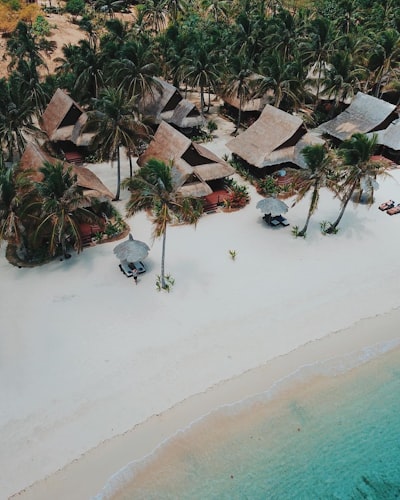
El Nido: Explore the stunning limestone cliffs, hidden lagoons, and crystal-clear waters of this picturesque town. Take a boat tour to visit the famous Big and Small Lagoons, as well as the Secret Lagoon. Coron: Dive into the turquoise waters of Coron's stunning lakes and wrecks. Visit the iconic Kayangan Lake, known for its crystal-clear waters and dramatic limestone formations. Puerto Princesa Subterranean River National Park: Embark on a boat tour through the world's longest navigable underground river, a UNESCO World Heritage Site. Marvel at the impressive cave formations and diverse ecosystem. Tubbataha Reef: This remote marine protected area is a diver's paradise, boasting vibrant coral reefs and an abundance of marine life, including manta rays, sharks, and sea turtles. Palawan Wildlife Rescue and Conservation Center: Observe the unique wildlife of Palawan, including the endangered Philippine Pangolin and the Palawan Peacock Pheasant. Nacpan Beach: Relax on this stunning, crescent-shaped beach, known for its powdery white sand and crystal-clear waters. Batak Tribe: Immerse yourself in the culture of the indigenous Batak people, known for their traditional way of life and unique handicrafts. Calauit Safari Park: Explore this unique wildlife reserve, home to a diverse array of African and Philippine species, including the Calamian deer and the Palawan bear cat. These are just a few of the many incredible attractions that Palawan Island has to offer. With its stunning natural beauty, rich biodiversity, and unique cultural experiences, Palawan is a must-visit destination for any traveler to the Philippines.

Machu Picchu Ruins: The main attraction, Machu Picchu, is a breathtaking archaeological site that showcases the remarkable engineering and architectural prowess of the Inca civilization. Explore the well-preserved stone structures, terraced gardens, and the iconic Inti Watana, a ceremonial sundial. Huayna Picchu: This iconic mountain, located directly behind Machu Picchu, offers stunning panoramic views of the entire site. The hike to the top is challenging but rewarding, with steep stairs and narrow paths leading to the summit. Inca Trail: One of the world's most famous hiking trails, the Inca Trail, winds through the Andes, offering stunning vistas and the opportunity to discover ancient Inca ruins along the way. The classic 4-day trek culminates at the Sun Gate, overlooking Machu Picchu. Machu Picchu Mountain: For those seeking a less strenuous hike, Machu Picchu Mountain provides an alternative with a gradual ascent and panoramic views of the citadel and the surrounding peaks. Aguas Calientes: Also known as Machu Picchu Pueblo, this lively town serves as the gateway to the Machu Picchu site. Explore the local markets, restaurants, and hot springs, which offer a relaxing respite after a day of exploring. Intipunku (Sun Gate): This ancient Inca checkpoint offers a dramatic entrance to Machu Picchu, with stunning views of the citadel and the surrounding mountains. Watching the sunrise from the Sun Gate is a breathtaking experience. Inca Bridge: This engineering marvel, located along the Inca Trail, is a testament to the Inca's advanced construction techniques. The bridge was built without the use of nails or mortar, and it offers a unique perspective on the Inca's transportation network. Putukusi Mountain: For those seeking a challenging hike with exceptional views, Putukusi Mountain provides a steep and strenuous trail that leads to a stunning vantage point overlooking Machu Picchu and the Urubamba River. These must-see attractions in and around Machu Picchu offer a diverse range of experiences, from exploring the ancient Inca ruins to hiking through the stunning Andean landscapes. Whether you're a history buff, an avid hiker, or simply seeking breathtaking natural beauty, Machu Picchu has something to captivate every traveler.
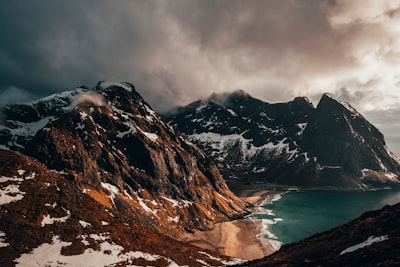
Trolltunga Trolltunga, or the "Troll's Tongue," is the main attraction in the area. This iconic rock formation juts out over 2,000 feet above the stunning Ringedalsvatnet lake, offering panoramic views of the surrounding mountains and fjords. The hike to Trolltunga is challenging but rewarding, taking approximately 8-12 hours roundtrip. Visitors can enjoy the dramatic landscape and take iconic photos on the rock formation. Ringedalsvatnet Lake Ringedalsvatnet is the beautiful lake that lies beneath Trolltunga. The turquoise waters and towering cliffs create a serene and picturesque setting. Visitors can take a boat tour on the lake or simply admire the stunning scenery from the shore. Skjeggedal Waterfall Located along the hike to Trolltunga, the Skjeggedal Waterfall is a stunning natural attraction. The waterfall cascades over 330 feet down the mountainside, creating a powerful and awe-inspiring display. Mågelitoppen Viewpoint For those seeking an alternative to the Trolltunga hike, the Mågelitoppen Viewpoint offers breathtaking views of the surrounding landscape. The hike to the viewpoint is less strenuous than the Trolltunga trail, making it a great option for those with limited time or fitness levels. Kjeragbolten While not directly in Trolltunga, the Kjeragbolten boulder is another iconic natural wonder in the region. The boulder is wedged between two cliffs, offering a unique and thrilling experience for adventurous visitors who dare to stand on it. Folgefonna Glacier The Folgefonna Glacier is the third-largest glacier in Norway, covering an area of over 200 square kilometers. Visitors can take a guided tour to explore the glacier's stunning blue ice formations and learn about the region's glacial history. Hardangerfjord The Hardangerfjord is one of Norway's most famous fjords, stretching over 100 kilometers inland. Visitors can take a scenic boat tour to admire the towering cliffs, cascading waterfalls, and quaint villages that line the fjord's shores. Husedalen Valley The Husedalen Valley is a picturesque hiking destination, featuring a series of stunning waterfalls and serene mountain landscapes. The valley is a popular spot for both day hikes and multi-day trekking adventures. Odda The town of Odda serves as a gateway to the Trolltunga region and offers a range of amenities for visitors, including accommodation, dining, and outdoor gear rental shops. Visitors can explore the town's charming streets, visit the local museum, or enjoy the scenic views from the surrounding hills. Buer Glacier The Buer Glacier is a smaller glacier located near Trolltunga, offering a more accessible option for those who want to experience the region's glacial landscapes. Visitors can take a guided tour or hike to the glacier's edge to admire its stunning blue ice formations. By exploring these must-see attractions, travelers to Trolltunga, Norway will be able to fully immerse themselves in the region's breathtaking natural beauty and rich outdoor experiences.

Milford Sound: Arguably the most famous and iconic attraction in Fiordland, Milford Sound is a stunning fiord carved by glaciers. Visitors can take a boat tour to witness the towering cliffs, cascading waterfalls, and diverse marine life, including seals, dolphins, and the rare Fiordland crested penguin. Doubtful Sound: Often referred to as the "Sound of Silence," Doubtful Sound is a remote and serene fiord that offers a more peaceful and less crowded experience than Milford Sound. Visitors can explore the fiord by boat, kayak, or on a guided walking tour. Kepler Track: One of New Zealand's Great Walks, the Kepler Track is a 60-kilometer loop that showcases the diverse landscapes of Fiordland, including alpine meadows, beech forests, and glacial lakes. The track can be completed in 3-4 days and offers stunning views of the surrounding mountains and valleys. Hollyford Track: Another of Fiordland's Great Walks, the Hollyford Track is a 56-kilometer trail that takes hikers through ancient forests, past cascading waterfalls, and along the Hollyford River. The track can be completed in 3-4 days and offers a glimpse into the region's rich Maori and European history. Lake Manapouri: Nestled in the heart of Fiordland, Lake Manapouri is a stunning glacial lake surrounded by towering mountains. Visitors can take a boat tour of the lake or explore the nearby Manapouri Power Station, which is an engineering marvel. Fiordland National Park Visitor Center: Located in the town of Te Anau, the Fiordland National Park Visitor Center is an excellent starting point for exploring the park. The center offers information, exhibits, and guided tours to help visitors plan their adventures. Tasman Glacier: While not located within Fiordland National Park, the Tasman Glacier is a must-see attraction for visitors to the region. This massive glacier, located in Aoraki/Mount Cook National Park, offers stunning views and the opportunity to witness the effects of climate change on the region's glaciers. Whether you're an avid hiker, a nature enthusiast, or simply seeking a breathtaking natural experience, Fiordland National Park has something to offer every traveler. With its diverse landscapes, abundant wildlife, and rich cultural heritage, this UNESCO World Heritage Site is a true gem of New Zealand's South Island.
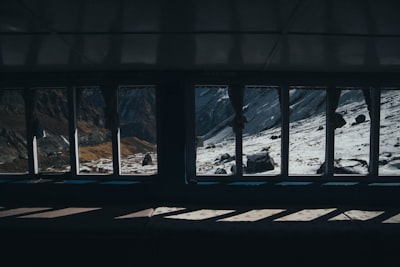
Khumbu Glacier: The Khumbu Glacier is a massive river of ice that flows from the slopes of Mount Everest. Trekkers can witness the incredible power of this glacier and the surrounding glacial landscape. Tengboche Monastery: Tengboche Monastery is a Buddhist monastery located at an elevation of 3,867 meters (12,687 feet). It is one of the most important religious sites in the Khumbu region and offers stunning views of the Himalayas. Namche Bazaar: Namche Bazaar is a vibrant Sherpa town that serves as the gateway to the Everest region. It is a hub for trekkers and mountaineers, offering a variety of shops, restaurants, and lodges. Everest View Hotel: The Everest View Hotel is a luxury hotel located at an elevation of 3,880 meters (12,713 feet). It offers breathtaking views of Mount Everest and the surrounding peaks. Kala Patthar: Kala Patthar is a vantage point that offers one of the best views of Mount Everest. Trekkers can climb to the top of Kala Patthar, which stands at an elevation of 5,643 meters (18,514 feet), for a stunning panoramic view of the Everest massif. Ama Dablam: Ama Dablam is a stunning mountain that is often referred to as the "Matterhorn of the Himalayas." Trekkers can enjoy stunning views of this iconic peak throughout the trek. Sagarmatha National Park: Sagarmatha National Park is a UNESCO World Heritage Site that is home to a diverse array of flora and fauna, including the endangered red panda and the Himalayan black bear. Sherpa Culture: The Everest region is home to the Sherpa people, who have a rich cultural heritage. Trekkers can learn about Sherpa customs, traditions, and way of life by visiting local villages and monasteries.

The Shwezigon Pagoda is a must-visit, with its gleaming golden stupa and intricate carvings. The Ananda Temple, considered one of the finest examples of Mon architecture, is another iconic landmark, featuring four standing Buddha statues and impressive frescoes. The Dhammayangyi Temple, the largest temple in Bagan, is a remarkable sight, with its massive brick structure and intricate carvings. The Sulamani Temple, with its ornate decorations and well-preserved murals, is also a highlight. For a panoramic view of the Bagan plains, visitors can climb to the top of the Shwesandaw Pagoda or the Pyathadar Temple. These elevated viewpoints offer breathtaking vistas of the surrounding temples and the Irrawaddy River. The Bagan Archaeological Museum is a must-visit for those interested in learning more about the history and culture of this ancient city. The museum houses a vast collection of artifacts, including stone carvings, bronze statues, and ancient manuscripts. Exploring the local markets, such as the Nyaung-U Market, is another essential experience in Bagan. Here, visitors can immerse themselves in the vibrant local culture, browse handcrafted souvenirs, and sample delicious Burmese cuisine. Overall, Bagan is a captivating destination that offers a unique blend of historical, cultural, and natural wonders, making it a must-visit for any traveler to Myanmar.

The Maldives is a stunning archipelago of over 1,000 coral islands in the Indian Ocean, known for its crystal-clear turquoise waters, pristine white-sand beaches, and luxurious overwater bungalow resorts. As a top travel destination, there are many incredible sights and experiences to discover. Here are some of the must-see attractions in the Maldives: Bioluminescent Beaches One of the most magical natural phenomena in the Maldives is the bioluminescent plankton that light up the beaches at night, creating a mesmerizing glow in the sand and water. The best places to witness this natural wonder are on the remote, uninhabited islands of Vaadhoo Island and Mudhdhoo Island. Hanifaru Bay Located in the Baa Atoll, Hanifaru Bay is a UNESCO World Heritage site and one of the best places in the world to spot manta rays. During the southwest monsoon season from June to November, hundreds of manta rays and whale sharks congregate in the bay to feed on the plankton-rich waters, providing an incredible snorkeling or diving experience. Banana Reef One of the most famous dive sites in the Maldives, Banana Reef is known for its vibrant marine life and unique banana-shaped coral formations. Divers can spot a variety of tropical fish, sharks, turtles, and even the occasional whale shark at this stunning underwater paradise. Hulhumale As the newest island in the Maldives, Hulhumale is a man-made island that serves as a residential and commercial hub, offering a more local and authentic experience compared to the luxury resorts. Visitors can explore the lively markets, restaurants, and beaches, and get a glimpse into the daily life of Maldivians. Utheemu Ganduvaru This historic palace on the island of Utheemu was the birthplace of Sultan Mohamed Thakurufaanu, a national hero who led a successful rebellion against the Portuguese in the 16th century. Visitors can tour the well-preserved palace and learn about the Maldives' rich cultural heritage. Ithaa Undersea Restaurant For a truly unique dining experience, the Ithaa Undersea Restaurant at the Conrad Maldives Rangali Island resort offers guests the opportunity to dine 16 feet below the ocean's surface, surrounded by a 180-degree panoramic view of the vibrant marine life. Malé As the capital and most populous city in the Maldives, Malé is a bustling urban center that offers a contrast to the tranquil resort islands. Visitors can explore the vibrant local markets, the impressive Grand Friday Mosque, and the National Museum, which showcases the country's rich cultural and historical artifacts. Anantara Kihavah Villas This luxurious resort on the Baa Atoll is home to the world's first underwater wine cellar and restaurant, offering guests a unique dining experience surrounded by the stunning marine life of the Indian Ocean. Fuvahmulah Known as the "Maldives' Galapagos," the island of Fuvahmulah is a biodiversity hotspot that is home to a variety of endemic plant and animal species, including the rare Fuvahmulah crab. Visitors can explore the island's lush vegetation, freshwater lakes, and unique geological formations. Addu Atoll The southernmost atoll in the Maldives, Addu Atoll is a popular destination for its diverse marine life, including manta rays, whale sharks, and a variety of tropical fish. Visitors can also explore the historic British-built structures and the vibrant local communities. These are just a few of the many incredible attractions and experiences that the Maldives has to offer. Whether you're seeking adventure, relaxation, or a unique cultural immersion, this stunning island nation is sure to leave a lasting impression on any traveler.
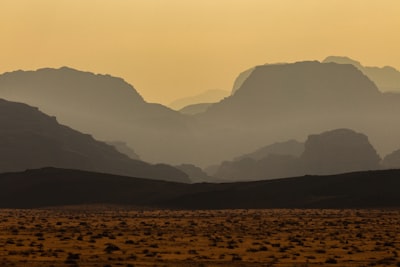
The Seven Pillars of Wisdom: This iconic natural formation, made famous by T.E. Lawrence's book "Seven Pillars of Wisdom," is a stunning sight to behold. The towering sandstone cliffs, carved by wind and water, offer breathtaking views and a glimpse into the region's rich history. Lawrence's Spring: Nestled in the heart of Wadi Rum, this natural spring is where T.E. Lawrence, also known as "Lawrence of Arabia," is said to have camped during his time in the desert. It's a serene and picturesque spot that provides a welcome respite from the surrounding arid landscape. Jebel Umm Adaami: As the highest point in Wadi Rum, Jebel Umm Adaami offers panoramic views of the entire desert landscape. The challenging hike to the summit is well worth the effort, providing a unique perspective of the region's stunning natural beauty. Burdah Rock Bridge: This natural rock arch, formed by centuries of erosion, is a true marvel of nature. Visitors can explore the area around the bridge, which offers opportunities for rock climbing and stunning photography. Khazali Canyon: Carved by wind and water, this narrow canyon is a true geological wonder. Visitors can hike through the canyon, marveling at the towering sandstone walls and the intricate patterns carved into the rock. Nabatean Inscriptions: Wadi Rum is home to numerous Nabatean inscriptions, which provide a glimpse into the region's ancient history. These inscriptions, carved into the rock, offer a unique opportunity to connect with the area's rich cultural heritage. Sunset and Stargazing: Wadi Rum is renowned for its stunning sunsets and clear night skies, making it an ideal destination for nature lovers and astrophotographers. Watching the sun dip below the horizon and the stars emerge in the night sky is a truly unforgettable experience. Whether you're seeking adventure, cultural immersion, or simply a chance to connect with the natural world, Wadi Rum offers a wealth of must-see attractions that will leave a lasting impression on any traveler.
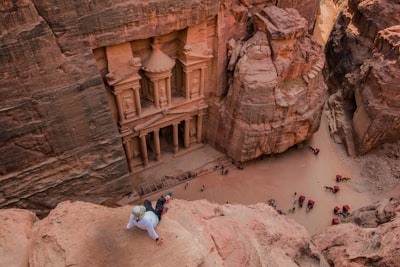
The Siq: The Siq is the dramatic, winding entrance to Petra, a 1.2-kilometer gorge with towering sandstone walls on either side. As you walk through the Siq, you'll be treated to stunning views and the first glimpse of Petra's iconic architecture. The Treasury: The Treasury, or Al-Khazneh, is Petra's most famous and recognizable landmark. This elaborate, ornate temple facade was carved directly into the rose-colored rock and is a breathtaking sight, especially when illuminated at night. The Monastery: Also known as Ad-Deir, the Monastery is one of Petra's largest and most impressive monuments. Carved into the side of a mountain, this temple-like structure can be reached after a challenging hike up 800 steps. The Street of Facades: The Street of Facades is a long, narrow gorge lined with elaborately carved temple and tomb facades, offering a glimpse into the grandeur of ancient Petra. The Royal Tombs: The Royal Tombs are a series of impressive, ornate tombs carved into the rock face, including the Urn Tomb, the Silk Tomb, and the Corinthian Tomb. The High Place of Sacrifice: The High Place of Sacrifice is an ancient Nabataean ritual site located high above Petra, accessible via a steep, winding trail. The views from the top are stunning. The Byzantine Church: The Byzantine Church is a well-preserved early Christian church located in the heart of Petra, featuring beautiful mosaic floors and architectural details. The Petra Museum: The Petra Museum, located at the entrance to the site, houses an impressive collection of artifacts and exhibits that provide insight into the history and culture of ancient Petra. The Beidha Archaeological Site: The Beidha Archaeological Site, located just a short distance from Petra, is an ancient Neolithic village that offers a glimpse into the lives of the earliest inhabitants of the region. The Petra Night Show: The Petra Night Show is a unique and unforgettable experience, where the Treasury is illuminated by candlelight and visitors can explore the site under the stars. In addition to these must-see attractions, Petra offers numerous opportunities for hiking, exploring, and immersing oneself in the rich history and culture of this ancient city. Whether you're interested in archaeology, architecture, or simply taking in the breathtaking natural beauty, Petra is a destination that will leave a lasting impression.
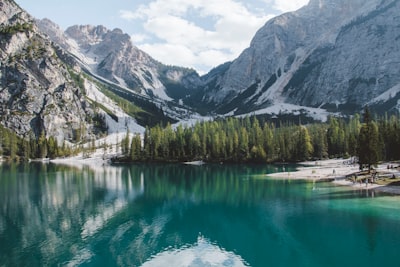
1. Tre Cime di Lavaredo (Three Peaks of Lavaredo): These iconic, jagged peaks are one of the most recognizable landmarks in the Dolomites. Hiking around the base of the peaks offers breathtaking views and a chance to experience the region's dramatic landscapes. 2. Lago di Braies (Braies Lake): This picturesque, emerald-green lake is surrounded by towering mountains and is a popular destination for hiking, boating, and photography. 3. Seceda: This high-altitude plateau offers panoramic views of the Dolomites and is accessible via a scenic cable car ride. Hiking trails in the area provide opportunities to explore the region's natural beauty. 4. Cortina d'Ampezzo: This charming alpine town is a popular ski destination and also offers a variety of cultural attractions, including historic churches, museums, and shopping. 5. Marmolada: The "Queen of the Dolomites," Marmolada is the highest peak in the range and features a glacier that can be accessed via a cable car. Visitors can enjoy hiking, skiing, and stunning views of the surrounding mountains. 6. Alpe di Siusi (Seiser Alm): Europe's largest high-altitude Alpine meadow, Alpe di Siusi is a popular destination for hiking, mountain biking, and enjoying the region's natural beauty. 7. Puez-Odle Nature Park: This protected natural area offers a variety of hiking trails that showcase the Dolomites' unique geology and diverse flora and fauna. 8. Lago di Carezza (Carezza Lake): This picturesque lake, surrounded by the Latemar mountain range, is known for its stunning turquoise waters and the reflection of the mountains in its surface. 9. Sass Pordoi: This high-altitude plateau offers panoramic views of the Dolomites and is accessible via a cable car. Visitors can enjoy hiking, rock climbing, and taking in the breathtaking scenery. 10. Rifugio Lagazuoi: This historic mountain hut, perched atop the Lagazuoi mountain, offers stunning views of the surrounding peaks and is a popular destination for hikers and mountaineers.
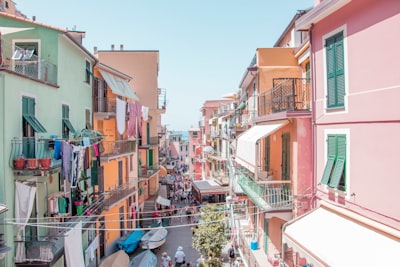
One of the must-see attractions in the Cinque Terre is the Sentiero Azzurro, a series of hiking trails that connect the five villages. The most famous section is the Sentiero Azzurro Centrale, which offers stunning views of the coastline and the colorful houses that cling to the cliffs. Hikers can enjoy the scenic walk, stopping to admire the picturesque harbors, vineyards, and olive groves along the way. Another must-visit attraction is the Sanctuary of Nostra Signora di Montenero, located in Riomaggiore. This historic church, dating back to the 14th century, offers panoramic views of the surrounding landscape and is a popular spot for both religious and cultural exploration. In Vernazza, visitors should not miss the opportunity to explore the charming harbor and the Piazza Marconi, the heart of the village. Here, you can find a variety of local shops, cafes, and restaurants, as well as the iconic Doria Castle, which offers stunning views of the coastline. Manarola is renowned for its colorful houses that cascade down the cliffs, creating a picturesque scene that is often captured in photographs. Visitors can stroll through the narrow streets, visit the local wineries, and enjoy the stunning views from the Punta Bonfiglio, a scenic viewpoint overlooking the village. Corniglia, the only village in the Cinque Terre that is not directly on the coast, is a charming and tranquil destination. Visitors can explore the historic center, visit the Church of St. Peter, and enjoy the panoramic views from the Belvedere di Corniglia, a scenic terrace overlooking the sea. In Monterosso al Mare, the largest of the five villages, visitors can explore the old town, with its charming streets and historic buildings, as well as the new town, which features a long, sandy beach and a variety of shops and restaurants. The Statue of the Giant, a towering statue of Neptune, is a must-see attraction in Monterosso. For those interested in the region's history and culture, the Cinque Terre National Park offers a variety of museums and cultural sites, including the Museo Civico di Riomaggiore, which showcases the history and traditions of the local communities. In addition to the must-see attractions, the Cinque Terre is also renowned for its delicious local cuisine, which features fresh seafood, homemade pasta, and locally-produced wines. Visitors can enjoy a variety of dining experiences, from casual trattorias to upscale restaurants, all while taking in the stunning views of the coastline. Overall, the Cinque Terre is a truly unique and captivating destination that offers a perfect blend of natural beauty, historic charm, and cultural richness. Whether you're a hiker, a foodie, or simply a lover of stunning scenery, the Cinque Terre is sure to leave a lasting impression.